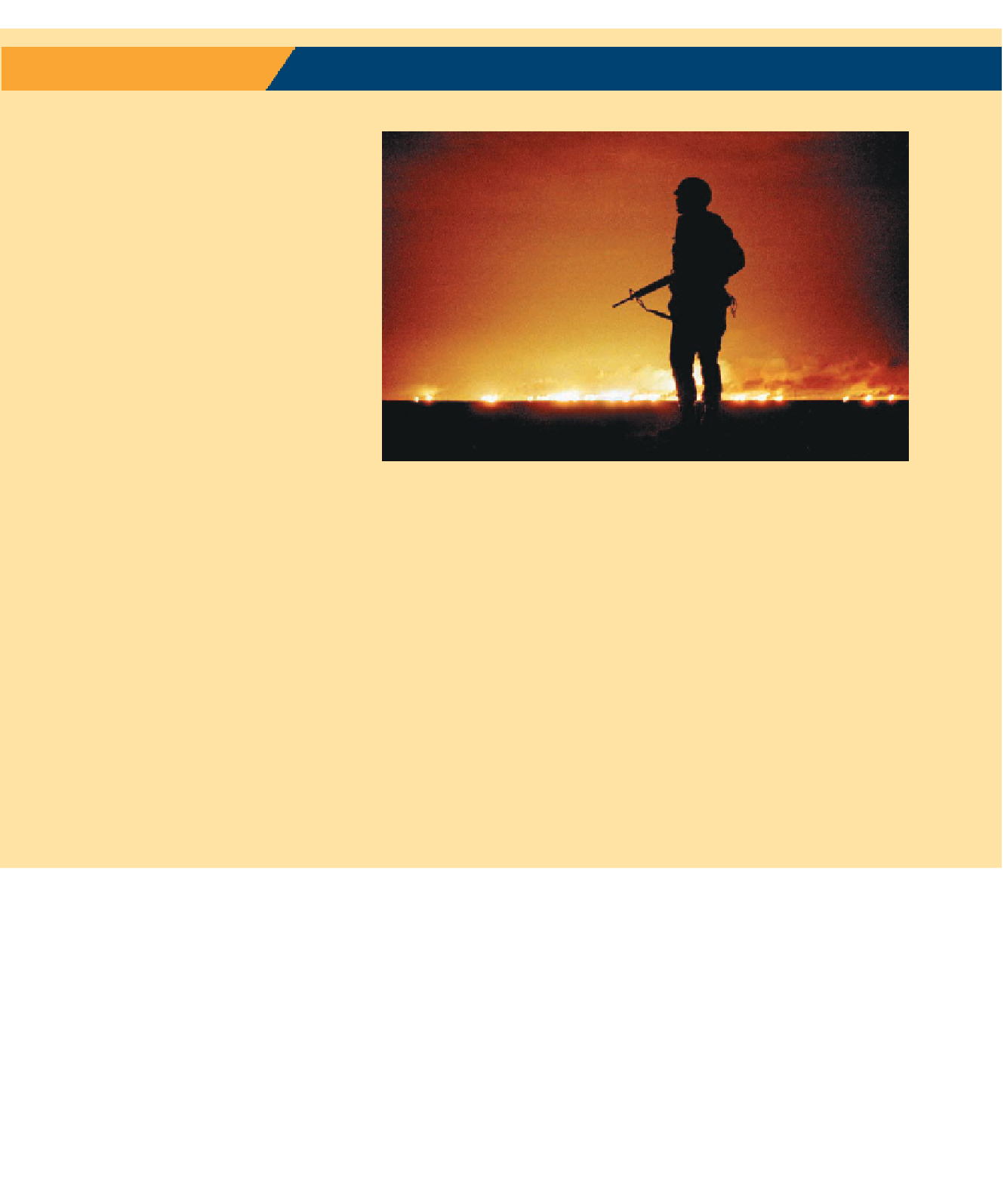Geology Reference
In-Depth Information
Geo-Focus
Oil, Plate Tectonics, and Politics
It is certainly not surprising that oil and
politics are closely linked. The Iran-Iraq
War of 1980-1989 and the Gulf War of
1990-1991 were both fought over oil
(
Figure 1). Indeed, many of the con-
fl icts in the Middle East have shared as
their underlying cause the desire to con-
trol the vast deposits of petroleum in the
region. Most people, however, are not
aware of
why
there is so much oil in this
part of the world.
Although signifi cant concentrations
of petroleum occur in many areas of the
world, more than 50% of all proven re-
serves are in the Persian Gulf region. It is
interesting, however, that this region did
not become a signifi cant petroleum-
producing area until the economic
recovery following World War II
(1939-1945). After the war, Western
Europe and Japan in particular became
dependent on Persian Gulf oil, and they
still rely heavily on this region for most
of their supply. The United States is also
dependent on imports from the Persian
Gulf, but receives signifi cant quantities
of petroleum from other sources, such as
Mexico and Venezuela.
Why is there so much oil in the Per-
sian Gulf region? The answer lies in the
ancient geography and plate movement
of this region during the Mesozoic and
Cenozoic eras. During the Mesozoic Era,
and particularly the Cretaceous Period
when most of the petroleum formed, the
Persian Gulf area was a broad marine
shelf extending eastward from Africa.
◗
◗
Figure 1
The Kuwaiti night skies were illuminated by 700 blazing oil wells set on fi re by
Iraqi troops during the 1991 Gulf War. The fi res continued for nine months.
This continental margin lay near the
equator where countless microorgan-
isms lived in the surface waters. The
remains of these organisms accumulated
with the bottom sediments and were
buried, beginning the complex process
of petroleum generation and the forma-
tion of source beds in which petroleum
forms.
As a consequence of rifting in the
Red Sea and the Gulf of Aden during
the Cenozoic Era, the Arabian plate is
moving northeast away from Africa and
subducting beneath Iran (Figure 2.17a).
During the early stages of collision
between Arabia and Iran, as the
sediments of the passive continental
margin were initially subducted,
heating broke down the organic
molecules and led to the formation
of petroleum.
The tilting of the Arabian block
to the northeast allowed the newly
formed petroleum to migrate upward
into the interior of the Arabian plate.
The continued subduction and colli-
sion with Iran folded the rocks, creat-
ing traps for petroleum to accumulate,
such that the vast area south of the
collision zone (known as the Zagros
suture) is a major oil-producing
region.
not be surprised at the intimate association between them.
Although the relationship between plate tectonic processes
and the evolution of life is incredibly complex, paleonto-
logical data provide convincing evidence of the infl uence of
plate movement on the distribution of organisms.
The present distribution of plants and animals is not
random, but is controlled mostly by climate and geographic
barriers. The world's biota occupy
biotic provinces
, which are
regions characterized by a distinctive assemblage of plants and
animals. Organisms within a province have similar ecological
requirements, and the boundaries separating provinces are
therefore natural ecological breaks. Climatic or geographic
barriers are the most common province boundaries, and
these are mostly controlled by plate movement.
The complex interaction between wind and ocean cur-
rents has a strong infl uence on the world's climates. Wind
and ocean currents are thus strongly influenced by the
number, distribution, topography, and orientation of con-
tinents. For example, the southern Andes Mountains act as
an effective barrier to moist, easterly blowing Pacifi c winds,

Search WWH ::

Custom Search